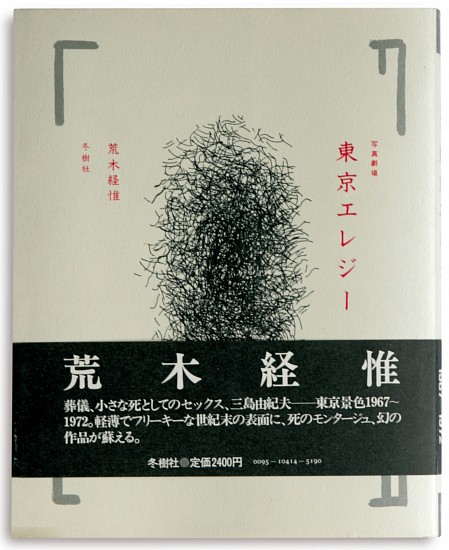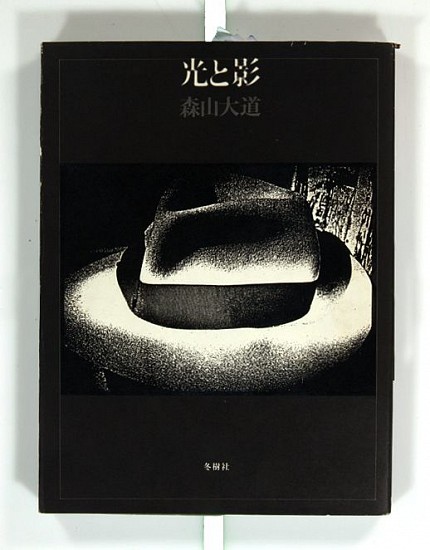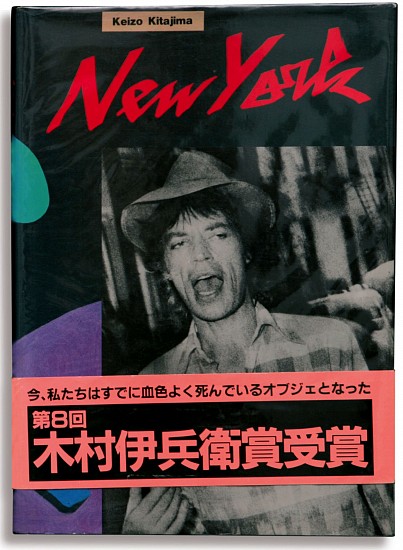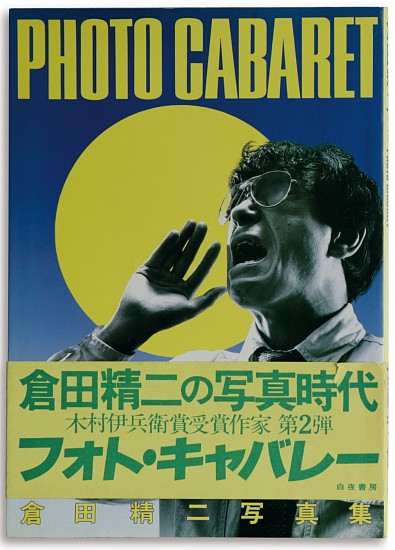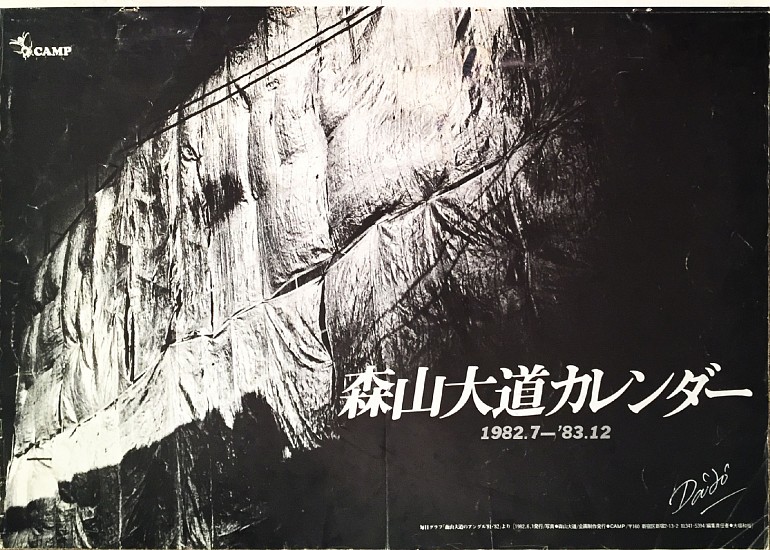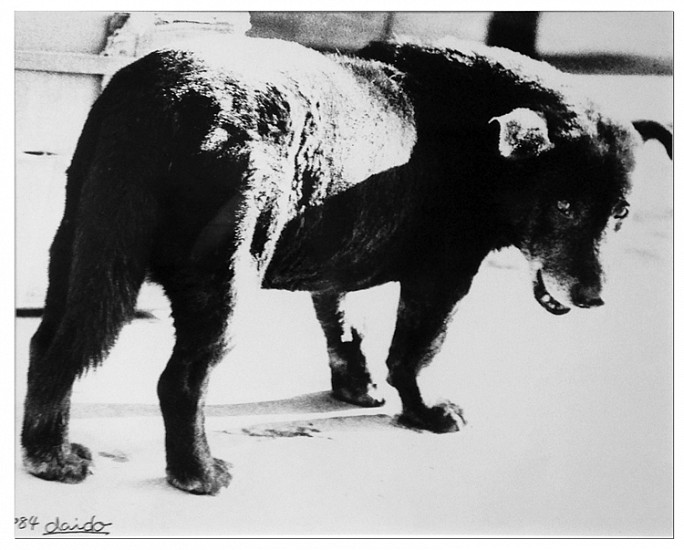Art Basel 2017 - Provoke Era
Shomei Tomatsu
Nippon (Japan), 1967
2112
8 1/2 x 7 1/2 in. (21.9 x 19.1 cm)
Tokyo: Shaken.
Illustrated with 150 black-and-white photographs by Shomei Tomatsu, printed in monotone gravure. Original silver cloth with title debossed on cover and stamped in black on spine. With publisher's clear plastic jacket.
Nippon was the first publication of Tomatsu's own publishing company Shaken. The images collected in the book were originally designed to make up three separate photobooks: “11:02†Nagasaki, Osorezan: Countryside Politicians, Homes, and Asphalt and Occupation. Due to the collapse of the intended publisher, the separate projects remained unrealized until Tomatsu formed Shaken.
In Nippon, Tomatsu addresses the conundrum of Japanese postwar national identity. Most of the photos which make up this book were shot on assignment in various parts of the country between 1955 and 1967, and cover a broad range of topics concerning Japanese life. Tomatsu himself notes in a text at the back of the book, that while many of the photographs were published previously or exhibited (his work was being serialized in numerous photography periodicals during the late 1960s), in editing Nippon he was able to “recompose†the photographs, changing titles and themes. None of the book’s texts address the photographs directly, and instead follow more broad thematic routes. This re-editing of the photographs and their grouped themes, forms a parallel to the postwar restructuring that altered Japan's view of itself after the occupation.
[Ref. Ryuichi Kaneko & Ivan Vartanian, Japanese Photobooks of the 1960s and '70s, pp. 94-101]
Price Upon Request
Taki, Koji; Takanashi, Yutaka; Nakahira, Takuma; Moriyama, Daido
Provoke. Shiso no tame no chohatsuteki shiryo (Provoke. Provocative Documents for Thought) Nos. 1 - 3. [Together with:] Mazu tashikarashisa no sekai o sutero (First Abandon the World of Pseudo-Certainty)] [Provoke 4 & 5], 1968 - 1970
10032-BK
Tokyo: Provoke-sha & Tabata Shoten.
Complete set
Provoke 1: 21 x 21cm; 8 ¼ x 8 ¼ inches. Published on November 1, 1968, in an edition of 1000 copies. With halftone reproductions of photographs by Nakahira, Takanashi, and Taki, with texts by Okada Takahiko and Taki. Original white wrappers, with title printed in black on front cover.
Provoke 2: 24 x 18.5 cm; 9 ½ x 7 ¼ inches. Published on March 10, 1969 in an edition of 1000 copies. With halftone reproductions of photographs by Moriyama, Nakahira, Takanashi, and Taki, with a text by Okada. Original grey wrappers, with title printed in black. With printed yellow bellyband, publicizing that this issue has Eros as its theme.
Provoke 3: 23.5 x 18.5 cm; 9 ¼ x 7 ¼ inches. Published on August 10, 1969 in an edition of 1000 copies. With halftone reproductions of photographs by Moriyama, Nakahira, Takanashi, and Taki, with texts by Okada and Yoshimasu Gozo. Original red wrappers, with title printed in black.
Provoke 4 & 5: 20.3 x 14.6 cm; 8 x 5 ¾ inches. Published by Tabata Shoten, Tokyo, on March 31, 1970. With halftone reproductions of photographs by Moriyama, Nakahira, Takanashi, and Taki, with texts by Amano Michie, Nakahira, Okada and Taki. Original photographically illustrated wrappers with matching dust jacket.
Begun in November 1968 by an avant-garde collective of writers and photographers, which included Koji Taki, Takuma Nakahira, Takahiko Okada, Yutaka Takanashi, and Daido Moriyama (who joined with the 2nd issue), Provoke magazine, subtitled Shiso no tame no chohatsuteki shiryo (Provocative Documents for Thought), was a radical revision of the prevailing photographic conventions. Lasting just three issues, the magazine culminated after a year and a half with Mazu tashikarashisa no sekai o sutero (First Abandon the World of Pseudo-Certainty), a book often referred to as Provoke 4 and 5.
The first issue begins with the Provoke Manifesto, signed by the four founders and describing the alienation of language and reality, and identifying photography as the one medium that was capable of conveying this reality:
“Today, when words have lost their material base—in other words, their reality—and seem suspended in mid-air, a photographer’s eye can capture fragments of reality that cannot be expressed in language as it is. He can submit those images as documents to be considered alongside language and ideology. This is why, brash as it may seem, Provoke has the subtitle ‘provocative documents of thought’.â€
Provoke magazine championed a photographic style called “are-bure-bokâ€. This “rough, blurry and out-of-focus†approach mirrored the countercultural spirit of 1960s Japan when the country was a hotbed of public protest. The magazine’s visceral aesthetic played a massive role in changing the face of post-war Japanese photography. Provoke’s grainy, black and white images trashed the glossy appeal of commercial photography and “objective†precision of European-style photojournalism. Offering brash views, abrupt framing and angled perspectives, its photographs were often taken without even looking through the viewfinder. But the magazine reveled in the inky materiality of the darkroom process, printing images across full-bleed spreads, interspersed with terse text and dynamic typography.
Sold
Kenji Kanesaka
Underground Generation, 1968
1748
11 1/8 x 8 5/8 in. (28.4 x 22.1 cm)
Tokyo: Novel Shobo
100 black-and-white photographs printed in offset. Original foil card wrappers, with printed bellyband.
This early collective publication, focusing on the then emergent art scene in Japan, features work by many of those who became the key photographers of post-war Japan, including Daido Moriyama, Masahisa Fukase, Eikoh Hosoe, Jun Morinaga, and Kenji Ishiguro. Some of Kanesaka’s own photography is included, though his primary role was that of editor. His agenda was to create a visual pastiche of the underground scene, and the growing influence of the youth culture movement in Japan. The inspiration of Andy Warhol's Index (Book), which had been published the previous year, is evident in the book’s chaotic collaged layout, with images placed directly up against each other, or overlapping, or rotated. The fragmented visual styling of Underground Generation is also indicative of the influence of the book’s co-editor, Takuma Nakahira, who in the same year was to publish his seminal Provoke periodical.
[Ref. Ryuichi Kaneko & Ivan Vartanian, Japanese Photobooks of the 1960s and '70s, pp. 136-139]
Price Upon Request





Daido Moriyama
Nippon Gekijo Shashincho (Japan - A Photo Theatre), 1968
1749
8 1/4 x 8 5/8 in. (21 x 22 cm)
Tokyo: Muromachi-Shobo
145 black-and-white photographs printed in offset. Text by Shuji Terayama. Original green velvet wrappers, with printed cardboard slipcase. This copy inscribed by Daido Moriyama in black felt-tip pen on the front free endpaper (in English and Kanji).
Moriyama's first printed work is a milestone of Japanese photography. It was published the year after he had received the New Artist Award from the Japan Photo Critics Association for his series of images of street performers published in the monthly photography magazine Camera Mainichi. The book contains these images, mixed with street scenes and other pictures, seemingly chosen at random. The book is divided into two sections, each with introductory poems by Shuji Terayama. In the photographs, Moriyama has laid the defining cornerstone for his work that was to come in the 1970s. He is already experimenting here with the technique of “are-buro-bukeâ€, with its hard angles, and with photographs of photographs.
“He sought the world of the hipster, the freak, the “otherâ€, from the avant-garde Terayama theatre group, which featured nude women, dwarfs, and burlesque characters of all kinds, to the more vernacular nightlife of the city, the strip joints, gangster bars, and backstreet Kabuki theatres, a fusion of the old and new, high and low, insider and outsider, freak and non-freak.†(Parr & Badger).
These photographs of Kabuki performances and other actors are mixed with snapshots of ordinary people: office workers become featureless components in the artificial glare of fluorescent lights and synthetic surfaces; or with photographs of embryos in test tubes printed at the end of the book. By combining these disparate subjects, Moriyama draws attention to the process by which a subject becomes a photograph, and how the act of photography is a theatrical event itself.
[Ref. Martin Parr & Gerry Badger, The Photobook: A History vol.I, p. 288; Ryuichi Kaneko & Ivan Vartanian, Japanese Photobooks of the 1960s and '70s, pp. 116-123]
Price Upon Request



Shomei Tomatsu
OO! Shinjuku, 1969
1751
10 1/8 x 7 1/4 in. (26 x 18.6 cm)
Tokyo: Shaken.
120 black-and-white photographic illustrations. Original photo-illustrated wrappers, with text by Tomatsu printed on the back cover.
Despite the economic upturn of the 1960s, which established Japan as the third-largest economic power in the world, a fundamental opposition developed against the new political, economic, and cultural structures that had emerged in the post-war period in Japan. In 1968, the resistance manifested itself once again in university student protests against the pending extension of the “ANPO†security pact and the Vietnam War. This phase of the upheaval and alienation is documented by Tomatsu in his photo book OO! Shinjuku. A resident of the Shinjuku commercial and government district of Tokyo, he photographed the lives of the young generation and the student protests, which began in Shinjuku. Tomatsu's photographic sequences of anti-Vietnam protesters, strip clubs, and dark back alleys capture the chaos of Shinjuku in the late sixties, and illustrate the district’s central position in the mythology of postwar Japanese counter-culture.
[Ref. Martin Parr & Gerry Badger, The Photobook: A History, vol.I, p. 290]
Price Upon Request
Kineo Kuwahara
Kikan Shashin Eizo- The (Quarterly) Photo Image, 1969
3739-BK
First and only edition. 10 vols. (complete). Numerous photographic plates (partly in colour) and illustrations. Japanese text with English abstract. Small folio. Original printed wrappers. A very good set. Tokyo, Shashin Hyoron-sha, 1969- 1971. A very important quarterly magazine bringing together almost all of the protagonists of the radicalist movement both in Japan and elsewhere. Includes unpublished work by Hosoe Eikoh, Takanashi Yutaka, Christer Stromholm, Fukase Masahisa, Tomatsu Shomei, Nakahira Takuma, Naito Masatoshi, Kawada Kikuji, Fukase Masahisa, Araki Nobuyoshi, Ishioka Eikoh, Kanoh Noriaki, Yokoo Tadanori, Sato Akira etc. Agressive layout, a superb mix of styles, papers, printing techniques, Edited by Kuwahara Kineo, Sasatani Mitsuko, and Yoshimura Shinya.
Price Upon Request
Shomei Tomatsu
Okinawa, Okinawa. Okinawa., 1969
2102
Oblong 4to, recased; photo-pictorial wrappers over boards, edgewear.Tokyo: Shaken First Edition. Oblong quarto. Illustrated with reproductions of the photographer's politically-charged images. Tomatsu's most political book, with the famous, searing image of a missile launching sandwiched between graphic slogans demanding the end to American occupation of the island. Like most of Tomatsu's books, Okinawa is difficult to categorize. It borrows stylistically from the Provoke school while never losing its focus as a social documentary, yet it would be overly simplistic to lump it in with other Japanese protest books, even those about Okinawa.
Price Upon Request




Nakahira Takuma
Kitarubeki Kotoba no Tameni (For a language to come)., 1970
1753
8 1/4 x 11 3/4 in. (21.2 x 30 cm)
Tokyo:Fudo-sha.
103 black-and-white photographs printed using the heliogravure method. Text by Okada Takahido. Graphic concept by Kimura Tsunesisa. Original stiff wrappers, with printed dust jacket. Cardboard slipcase with title and name of author printed on the covering sticker.
Through his photographs and writings Takuma Nakahira was both the chief polemicist for the Provoke group and its political conscience. Along with Moriyama's Sashin yo Sayonara (Bye Bye Photography), his book Kitarubeki Kotoba no Tameni (For a language to come) marks the apogee of the Provoke period. It exhibits all the visual characteristics of the Provoke style, yet differs from Moriyama’s book in that Nakahira's sensibility is quite dissimilar. Being more political in his general outlook, Nakahira uses hidden themes to express his antagonism to the colonization of Japan by American consumerism. For example, Kitarubeki Kotoba no Tameni closes with several shots of the sea: a dark and menacing sea, a metaphor for social constriction and political claustrophobia. The other overwhelming metaphor in the book is fire, an apocalyptic, post-Hiroshima conflagration, often expressed indirectly in Nakahira's night pictures with swathes of burned-out lens flare.
[Ref. Martin Parr & Gerry Badger, The Photobook: A History vol.I, pp. 292-293; Ryuichi Kaneko & Ivan Vartanian, Japanese Photobooks of the 1960s and '70s, pp. 130-135].
Price Upon Request
Shomei Tomatsu, Nobuyoshi Araki, Daido Moriyama, Takuma Nakahira, Masahisa Fukase, Masatoshi Naito, Kazuo Kitai et al.
Ken. Nos. 1-3. Complete, 1970-1971
2113
7 3/8 x 9 in. (19 x 23 cm)
Tokyo: Shaken. Three volumes.
Black-and-white photographic illustrations throughout. Original stiff photo-illustrated wrappers. Complete set in three issues.
Ken was published by Shaken, the company established by Shomei Tomatsu, who provided the cover photo for the first issue. Like Provoke before it, Ken features much work in the “are-bure-bokeâ€, or rough, blurred, and out-of-focus style. Each of the three issues was edited by a different photographer: Sawano Yoshio, Naito Masatoshi, and Kimura Tsunehisa. The first issue contains criticism of the Osaka World Exposition (1970), as well as cultural criticism related to photography. The periodical includes contributions by members of the Provoke crew: Koji Taki, Daido Moriyama, Takuma Nakahira, and Nobuyoshi Araki, among others.
KEN, in Japanese, stands for a wide variety of words including sword, experience, examine, struggle, and others, but perhaps more important in this case, the verb “to see†is a more appropriate translation.
Sold
Noboyoshi Araki
Okinawa: Araki Nobuyoshi Shashinshu 2, Zoku Senchimentaru na tabi (Araki Nobuyoshi Photobook 2, Sentimental Journey continued), 1971
1756
7 1/8 x 5 in. (18 x 12.6 cm)
Tokyo: Self-published by the artist.
Published in an edition of 1000 unnumbered copies. Original wrappers, printed in black-and-white on both front and back covers. With 200 black-and-white photographs printed in offset. Design by Katsumi Yutani.
This copy is signed by Araki in blue pen on the first page, and includes with a drawing of a three-trunked elephant.
This is the second of the loose trilogy of privately printed books produced by Araki, preceded by Sentimental Journey (1971) and followed by Tokyo (1973). Araki took the photographs for this book during a visit to Okinawa, where he was working on a poster campaign for the Japanese Government to mark the return of Okinawa Island to Japanese administration after 27 years of United States control. Although the title suggests that it is a continuation of the work he made of his honeymoon in Sentimental Journey, the work is, in fact, unrelated and consists of a series of street scenes, some nudes and only a few photographs of his wife Yoko.
Two photographs are printed horizontally across each spread of this small-format book, with no partitioning space between them. A wide amount of white space surrounds these pairs of photographs, reinforcing the idea that they should be considered simultaneously, or even as one continuous image. Many of the images include advertisements and other photographs within the frame, such as the opening shot, which shows August Sander's photograph of two young boxers on the cover of Camera magazine.
[Ref. Andrew Roth, The Open Book: A History of the Photographic Book from 1878 to the Present, pp. 270-1; Ryuichi Kaneko & Ivan Vartanian, Japanese Photobooks of the 1960s and '70s, p. 114]
Price Upon Request
Nobuyoshi Araki
Senchimentaru na Tabi (Sentimental Journey), 1971
1755
9 1/4 x 9 1/4 in. (23.8 x 23.8 cm)
Tokyo: Self-published by the artist.
With 108 black and white photographs printed in offset
Original black-and-white photo-illustrated wrappers, with the handwritten title in Japanese printed in black on the front cover, together with the book’s noted edition of 1,000 copies
This is Araki’s most influential book, and one of the most important photobooks of the twentieth century. Araki made these intensely personal photographs whilst on his honeymoon with his bride Yoko, whose name appears alongside her husband’s as co-author. The cover photograph is of their wedding. The photographing of this most intimate of occasions attracted much criticism in a country which still valued a strict code of behavior. In Japan, the “sentimental†had a most negative image, with connotations of obsessive self-absorption and a disregard for social and political issues; ultimately, by putting his private life forward for public scrutiny, Araki paved the way for successive generations of Japanese photographers to work in a similar vein.
[Ref. Andrew Roth, The Book of 101 Books: Seminal Photographic Books of the Twentieth Century, pp. 206-7; Martin Parr & Gerry Badger, The Photobook: A History, vol.I, p. 295; Andrew Roth, The Open Book: A History of the Photographic Book from 1878 to the Present, pp. 268-9; M. Auer, 802 photo books from the M. + M. Auer collection, p. 527; Ryuichi Kaneko & Ivan Vartanian, Japanese Photobooks of the 1960s and ‘70s, pp. 108-115]
Price Upon Request


Nobuyoshi Araki
Oh Nippon! (Oh Japan !), 1971
1754
10 5/8 x 8 in. (27 x 20.6 cm)
Tokyo: Miki Shuppan.
Illustrated with 225 black-and-white heliogravure-printed photographs. Design by Mikuo Nakamura. Textured endpapers. Original photo-illustrated French-style wrappers with elongated flaps.
First edition of Araki's initial conventionally published book following his early series of photocopy books. Despite the eroticism being more playful and non-threatening than is evident in his later bondage-obsessed books, Araki still to combat problems with the Japanese censors. Many of his proposed images were rejected. A compromise, at least in terms of Araki's original vision and imagery, was found with the development by Nakamura of a layout that split the rejected images into sections which could be reassembled by folding opposing pages together across multiple spreads. With the censors appeased, Araki was able to publish something close to the book he had originally intended.
Price Upon Request









GERIBARA 5. [Nobuyoshi Araki et al].
Mizugi no Yangu Redii-Tachi (Bathing Beauties); Benjo (Toilet); Five Girls, 1971, 1971, 1972
1757
7 1/8 x 10 in. (18.2 x 25.4 cm)
Tokyo: Fukushu-Shudan, Geribara 5.
Benjo: 104 black-and-white photographs printed in offset. Side-stapled in original photo-illustrated wrappers.
Mizugi no Yangu Redii-Tachi: 306 black-and-white photographs printed in offset. Side-stapled in original photo-illustrated wrappers.
Five Girls: 84 black-and-white photographs printed in offset. Side-stapled in original photo-illustrated wrappers.
The complete set of three books produced by Geribara 5 [The Diarrhoea-Shit Reproductive Collective of 5], a group which consisted of Araki, Yoshio Takase, Koji Yaehata, Naohosia Tabogami, Fukuo Ikeda, and Tomoko 'Miss Geribara' Kamiguchi, which flourished briefly in the early 1970s.
Benjo contains a series of photographs taken in Tokyo restrooms of the toilets and attendant graffiti. Each page of Mizugi no Yangu Redii-Tach contains three photographs showing different young women on the beach in bathing suits. Below each photograph is the girl's address and telephone number, half of which are allegedly made up, the rest genuine according to Shuji Terayama, who apparently tried phoning all of them. The last book, Five Girls, contains photographs of five models posing in various styles.
[Ref. Martin Parr & Gerry Badger, The Photobook: A History, vol.I, p. 296].
Sold
Daido Moriyama
Kagerou (Mayfly), 1972
1758
7 3/8 x 10 5/8 in. (19 x 27 cm)
Tokyo: Haga Books.
114 photographic reproductions, of which fourteen are tipped-in color plates. Original stiff wrappers, with paper-covered slipcase and printed bellyband. This copy inscribed by Daido Moriyama in black pen (in both English and Kanji)
The publication is exceptional amongst Moriyama's output as much for his seminal use of color, as for the book's eroticism. Moriyama's fourth book features nudes, the majority being bondage scenes. Having taken its title from the Japanese word for “mayflyâ€, the series captures fleeting and momentary scenes of females bound in Kinbaku (rope bondage). While similar in theme to much of Araki's work, the figures in these photos are removed from their context of the red-light districts of Tokyo, and Moriyama now sets the women against outdoor landscapes and leafy backgrounds. Raw and unchoreographed in their manner, the images relay a disquieting sense of anticipation throughout each scene. The images are somewhat grounded by a section in the center of the book that reproduces contact sheets showing images from the shoots.
Price Upon Request




Daido Moriyama
Karyudo (Hunter), 1972
1759
Hardcover with authors name printed on the dust jacket. Comes with bellyband. 104 black and white photographs with a text by Tanadori Yokoo. Most of Moriyama's cult images are featured in this special monograph of the photographer's work.
Price Upon Request
Shomei Tomatsu
I am a king, 1972
2115
9 3/8 x 8 1/4 in. (24 x 21 cm)
Tokyo: Shashin Hyouronsha.
Numerous black-and-white and color reproductions throughout. Original stiff wrappers in photo-illustrated dust jacket. Printed cardboard slipcase.
In 1972, at the age of forty-two and already established as one of Japan's most important photographers, Tomatsu moved to Okinawa. I am a King is his magnum opus of this period. The book gathers portraits of politicians, roadside scenes, 1960's era protests, images of industrial detritus, and the urban skyline. A persistent theme is the Americanization of post WWII Japan and the upheaval it wrought on traditional Japanese culture.
I Am a King has, at its center, a section produced at the height of the student protests, in 1969–70, and in this section he pairs photographs with a month’s worth of his own diary entries. The fact that the text is his own, places Tomatsu’s book far from the Japanese photobooks of the prewar period, in which photographers’ efforts were often framed with essays or statements by hired critics. The book is typical of Tomatsu’s oeuvre, in that it magnifies documentary photography through the use of montage, abstraction, and the mixing of color and black-and-white images.
Price Upon Request




Daido Moriyama
Shashin yo Sayonara (Bye Bye Photography), 1972
1760
7 1/4 x 9 in. (18.5 x 23 cm)
Tokyo: Shashin Hyoron-sha.
137 double-page black-and-white photographs printed in rich gravure. Original wrappers, with printed dust jacket. Includes 32 pages of dialogue between photographers Takuma Nakahira and Daido Moriyama.
This is the most emblematic of Provoke photobooks, in which the aesthetic principles of the movement are best expressed. Moriyama pushes the boundaries of the medium: assembling images from a variety of sources, placing them in a discordant anti-sequence, with an array of full-page grainy, blurry, and sometimes indecipherable pictures. The images were further manipulated in the dark room, in a way that results in high contrast prints with a harsh coarse grain. This rough style became somewhat of a trademark and found wide appeal with a new Japanese generation.
Shashin yo Sayonara was produced as a result of a discussion Moriyama had with Takuma Nakahira in the Hilltop (Yamanoue) Hotel in Tokyo in August 1972. The two had been friends since 1964 and both had contributed to Provoke magazine. The argument centered on the function of photography to reflect reality.
“Shashin yo Sayonara (Bye Bye Photography) is the most extreme monument of the Provoke period, indeed it is one of the most extreme photobooks ever published. Daido Moriyama pushes both the form of the photographic sequence and the photograph itself to the limits of legibility, with a brilliant barrage of stream-of-consciousness imagery culled from his own pictures, found photographs—such as shots of car accidents—and images taken from the television set. Any notion of ‘good’ technique is thrown out the window. The pictures exhibit all the qualities of reject negatives discarded in the darkroom then retrieved from the bin. The photographic language is one of blur, motion, scratches, light leaks, dust, graininess and stains ... The pace is frenetic, the image bombardment never lets up, and we reach the book's end in a state either of breathless exhaustion or on an image-fuelled high.†(Parr & Badger)
[Ref. Martin Parr & Gerry Badger, The Photobook: A History, vol.I, pp. 298-299; Andrew Roth, The Book of 101 Books: Seminal Photographic Books of the Twentieth Century, pp. 218-220; Andrew Roth, The Open Book: A History of the Photographic Book from 1878 to the Present, pp. 290-291; M. Auer, 802 photo books from the M. + M. Auer collection, p. 543; Ryuichi Kaneko & Ivan Vartanian - Japanese Photobooks of the 1960s and ‘70s, p. 29]
Price Upon Request
Nobuyoshi Araki
Tokyo: Araki Nobuyoshi Shashinshu 3 (Tokyo: Araki Nobuyoshi Photobook 3), 1973
1761
5 x 10 in. (13 x 25.7 cm)
Tokyo: Fukusha Shudan Geribara 5.
56 black-and-white photographs printed in offset. Design by Katsumi Yutani. Pink endpapers. Original wrappers, with a text by Köji Taki, printed in olive green in the form of a page from a newspaper; side-stapled.
This copy signed by Araki.
Tokyo is the last in the series of three volumes which examine different aspects of everyday life; it was preceded by Sentimental Journey (1971) and Okinawa: Araki Nobuyoshi Photobook 2 [Sentimental Journey Continued] (1971). Here, Araki juxtaposes two photographs, one flush above the other in a vertical layout instead of the horizontal layout of Okinawa. Most of the images show commuters crossing the streets of Tokyo, paired with pictures of women posing nude or in compromising positions.
“When these (three) volumes are viewed collectively, it becomes clear that Araki is working out a series of related ideas across a number of different publications: the public versus the private, the role of the photographer as a reporter, the contrast of the specific and the general, ideas of locale and narrative, and the very function of a photobook†(Kaneko & Vartanian, p. 110).
[Ref. Ryuichi Kaneko & Ivan Vartanian, Japanese Photobooks of the 1960s and '70s, p. 115]
Price Upon Request




Katsumi Wanatabe
Shinjuku gunto den 66/73 (Shinjuku Thievery Story '66-'73), 1973
1768
7 1/4 x 5 in. (18.5 x 12.8 cm)
Tokyo: Bara Gaho-sha.
128 black-and-white photographs printed in offset on yellow paper. Saddle-stapled self-wrappers. Shinjuku gunto den 66/73 was published in an edition of between only 500 or 1,000 copies, and half of those printed were lost to water damage.
During the late 1960s and early ‘70s, Watanabe photographed the prostitutes, transvestites, yakuza (gangs), and revelers in Kabukicho, the red light district of Shinjuku. He earned a living by selling his photographs to his subjects, many of whom were regulars in the area, when he saw them on subsequent nights out, offering three prints for 200 yen. Watanabe seemingly pays special attention to the allure of his models, who in turn clearly enjoy being photographed. This particular mix of spontaneity and characteristic posing would have a definitive influence on a whole generation of photographers, including Seiji Kurata and Keizo Kitajima.
Watanabe's photographs constitute an important archive of Tokyo nightlife. Some are captioned with just the date and place, but in many Watanabe describes and identifies his subjects: “Someone I happen to see often in Shinjukuâ€; “Someone who works at nightâ€; “Someone wearing a wigâ€; “Someone who came in from Okinawaâ€; 'â€People who have been drinkingâ€; “Someone who works in the nudeâ€; “Homosexualsâ€; “Someone who diedâ€; “Someone who works in a Turkish bathâ€; “People jumpingâ€; “Someone who likes photos of himselfâ€; “3 guys who have been drinkingâ€; “Someone wearing silver lameâ€; “Someone who wants to become a celebrityâ€.
[Ref. M. Auer, 802 photo books from the M. + M. Auer collection, 570; Ryuichi Kaneko & Ivan Vartanian, Japanese Photobooks from the 1960s and '70s, pp. 140-43; Martin Parr & Gerry Badger, The Photobook: A History vol. III, p. 221]
Price Upon Request






Yutaka Takanashi
Toshi-e (Towards the City), 1974
1762
11 x 16 3/8 in.
Tokyo: Izara Shobo (self-published)
2 volumes.
Vol. 1. Towards the City
41.8 × 28 cm; 16 ½ x 11 inches
62 black-and-white photographs printed in gravure. Poem by Yoshimasu Gozu, notes by Takanashi. Design by Kohei Sugiura. Printed silver endpapers. Black cloth-covered boards, spine lettered in white, silver aluminum disk mounted to upper side;
Vol. 2. Note Tokyo-Jin, 25.6 × 18.2 cm; 10 x 7 ¼ inches. 54 black-and-white photographs printed in gravure. Black wrappers with printed label to front. Black paper-covered board box with printed paper strip to spine. Both volumes signed by Takanashi, the first in black pen, the second in silver.
Yutaka Takanashi was a leading commercial photographer during the Japanese economic boom of the 1960s. Towards the City spans the breadth of his career. Together, the two volumes document the effects of Japan’s rapid economic growth and the cost paid by the country as a result of this period of unbridled consumerism, where regional differences were rapidly evaporating, to be replaced by somewhat characterless urban centers.
In Toshi-e, Takanashi combines a multi-layered image of Tokyo and its inhabitants with glimpses of bleak, gloomy landscapes—generally without people—on which the city and industry have taken their toll. While the urban photos still adhere to the subjective documentary photography approach, the landscape images are wholly in the radical Provoke “are-bure-boke†style. In the January 1966 issue of Camera Mainichi Takanashi presented a thirty-eight-page spread under the title “Tokyoitesâ€, in which he attempted to capture Tokyo through a series of fragmented snapshots. Many of these photographs are included in the second volume, Note Tokyo-Jin.
Takanashi was a founder member of the Provoke Group, alongside photographer Takuma Nakahira, critic Koji Taki, and poet Takahiko Okada; Daido Moriyama would join them after the first issue of Provoke magazine was published. Toshi-e is “the last and the most luxurious of the group’s books†(The Photobook). The design is by Kohei Sugiura who also designed the deluxe edition of Robert Frank’s The Lines of My Hand, and Eikoh Hosoe’s Killed by Roses among others.
[Ref. Martin Parr & Gerry Badger,The Photobook: A History, vol.I, p. 302; Ryuichi Kaneko & Ivan Vartanian, Japanese Photobooks of the 1960s and '70s, pp. 168-73]
Price Upon Request
Daido Moriyama
Workshop. Nos. 1 - 8., 1974 –1976
1763
19 5/8 x 14 1/8 in. (50 x 36 cm)
Tokyo: Workshop Shashin Gakko, September 1974 –July 1976
Vols. 1 - 4: 50 x 36 cm; 19 ¾ x 14 ¼ inches; unbound broadsheet newspapers,
Vols. 5 - 8: 28.5 x 14.4 cm; 11 ¼ x 5 ¾ inches; in original stapled photo-illustrated wrappers.
Workshop was the eponymous journal of Workshop, a photography school where limited-enrollment classes were taught by a group of photographers—Araki Nobuyoshi, Shomei Tomatsu, Masahisa Fukase, Eikoh Hosoe, Daido Moriyama and Noriaki Yokosuka—beginning in April 1974. Each member of the group was given responsibility for a section of the magazine, which actively explored new trends in photography through essays and criticism (for example, the photographs in the final eighth issue are given over entirely to Seiji Kurata, and include unpublished photos plus photos that would later appear in his photobook Flash-Up). It was first issued as a tabloid on a limited subscription basis, but after the fifth issue, in October 1975, it was published as a magazine-sized photography collection. The school closed in March 1976, although the magazine continued for annual subscribers through the eighth issue in July.
Price Upon Request





Yutaka Takanashi
Machi (Town), 1977
1764
11 3/4 x 16 1/2 in. (30 x 42 cm)
Tokyo: Asahi Shibun-sha.
Full-bleed color photographic reproductions throughout. Bound in original cloth, with acetate dust jacket and a 12-page supplement loosely inserted; housed in cardboard slipcase with printed bellyband; design by Kamegai Shoji. The supplementary brochure provides photographic captions and a biographical profile of the photographer.
Immediately after the publication of Toshi-e, Yutaka Takanashi changed his style of photography fundamentally. Instead of the moving 35mm camera, Takanashi switched to a large plate camera. In his second book, Machi, Takanashi shows the vanishing prewar Tokyo. In precise Cibachrome prints, Takanashi describes the narrow suburban streets where old-fashioned wood and brick buildings are home to small shops and businesses. The book captures the charm of the old shitamachi (lower class) neighborhoods of Tokyo, here shown without the presence of humans. The change in photographic techniques is indicative of Takanashi’s rational use of the medium of photography. All of the color images were taken with a large-format camera mounted on a tripod often using extremely long exposure times (up to 20 minutes). Such a plate camera enabled Takanashi to create a precise document of what he saw, and to make time stand still long enough to gaze on the last remnants of traditional life and architecture, doomed by the breathless pace of change in Tokyo and Japanese society.
Price Upon Request





Keizo Kitajima
Shashin Tokkyubin Tokyo (Photomail from Tokyo), 1980
1770
7 1/4 x 10 1/8 in. (18.5 x 26 cm)
Tokyo: Paroru-sha.
113 photographs, including some reproduced in color. Folded poster bound in at front of the book, with text and illustrations printed on one side and a large, two-color reproduction on verso. Original wrappers, with photo-illustrated dust jacket and printed bellyband.
In 1979 Keizo Kitajima, a graduate of Daido Moriyama’s class at Workshop, the influential photography school founded by Shomei Tomatsu, held a series of monthly exhibitions at Image Shop Camp, a gallery and forum he established with other members of the Workshop group after it closed. Each of the twelve exhibitions was accompanied by a publication entitled Photo Express Tokyo. Shashin Tokkyubin Tokyo gathers together images from the Photo Express issues into one volume, interspersed with color work not included in the original series of magazines. The work captures Kitajima's night-time wanderings through the underbelly of Tokyo. His style of photography seemed to exemplify an “other-worldliness†that was in stark contrast to the decorum of daytime Tokyo. "The combination of black and white with color is interesting, because this is a difficult trick to pull off. The tension between Kitajima's flamboyant, contrasty, edgy monochrome and his matter-of-fact, understated color makes this one of the most distinctive books in the wide bibliography on Shinjuku nightlife." (Parr & Badger)
[Ref. Martin Parr & Gerry Badger, The Photobook: A History, vol.III]
Price Upon Request




Seiji Kurata
Flash Up. Street PhotoRandom Tokyo 1975 -1979., 1980
1773
8 1/4 x 11 5/8 in. (21.1 x 29.6 cm)
Tokyo: Byakuyashobo.
199 black-and-white photographic illustrations. Text by Takashi Ueno, Kazuo Nishi and Akira Hasegawa. Design by Akira Suei. Original wrappers with photo-illustrated dust jacket, clear acetate outer jacket, and printed bellyband. With the famous cover picture of a Yakuza, heavily tattooed and brandishing a samurai, on a Shinjuku rooftop.
Flash Up by Seiji Kurata is a photographic excursion into the seedy parts of 1970s Tokyo nightlife. Kurata, who began his photographing career doing workshops with Daido Moriyama and Araki Nobuyoshi, traveled through the nightclub scene of Ikebukuro and Shinjuku, photographing the tattooed yakuza underworld and violent street fights, and directly contrasting car crash victims with portraits of nightclub hostesses and ultra-right wingers of the Black Dragon Society. With this book Kurata earned the Kimura Ihei Award recognizing new photographers in 1980. Unlike the more expressionistic styles of his Provoke teachers, Kurata’s medium-format photos carry a journalistic clarity, and do so without sacrificing any energy or sense of immediacy.
Price Upon Request



Daido Moriyama, Keizo Kitajima et al.
Image Shop Camp Vol. 1 or Last!, 1980
1769
11 3/8 x 16 1/8 in. (28.9 x 41.1 cm)
Tokyo: Camp.
Original photo-illustrated stapled wrappers
Although the Workshop Collective would dissolve in 1976, a number of its participants, including Daido Moriyama, Seiji Kurata and Keizo Kitajima would go on to establish a new alternative gallery space, Image Shop CAMP that same year. The group attempted to capture different snapshots of the working people struggling on the dark side of urban life. The impression of speed that these images communicate was also a feature of work at Image Shop CAMP where large-scale prints were projected on rolls of bromide paper attached to the wall, sponged with developer and fixative, and immediately exhibited. Kitajima’s yearlong series of monthly solo exhibitions at Image Shop Camp in 1979, titled Photo Express: Tokyo, proved to be a landmark series of exhibitions. As the title suggests, only this single issue of the CAMP gallery magazine was published, and its blend of post-Provoke images and graphic design attempt to capture the immediacy and thrill of the exhibition space.
Sold



Keizo Kitajima
Shishin tokkyubin Okinawa (Photo mail from Okinawa). 1-4 [complete set]., 1980
1980
1980
1771
8 1/4 x 11 5/8 in. (21 x 29.6 cm)
Tokyo: Parole-sha, January-July
Totaling 131 black-and-white photographs. Black-and-white photo-illustrated stapled wrappers printed in either light pink, blue, dark pink or green.
Encouraged by the reception to his Tokyo work, in 1980 Kitajima began photographing in and around the red-light district of Koza, a city in Okinawa situated close to the Kadena U.S. Air Force base which had been situated on the island since the end of the World War II. The military presence had resulted in a pleasure and entertainment industry evolved to cater to the Americans stationed there, which offered a marked contrast to the local traditional Japanese culture. Kitajima intended to publish these photographs in a series of bi-monthly magazines called Photo Express Okinawa, though only these four issues were realized before financial restrictions forced him to stop, and give up plans for subsequent series in Taiwan, South Korea, Hawaii, and China. Each issue focuses on a specific period of time: Issue 1, 15 - 31 January; Issue 2, 1 - 31 March; Issue 3, 1 - 15 May; Issue 4, 1 - 15 July.
Unlike the Tokyo series, Kitajima’s photographs from Okinawa were never collected in book form. There are no surviving prints or negatives, and therefore subsequent publications have had to scan the photographs from the pages of these four issues of Photo Express Okinawa.
Price Upon Request
1980
1980 | Zucker Art Books




Nobuyoshi Araki
Shashin gekijo: Tokyo ereji (A Photo Theater: Tokyo Elegy), 1981
1774
7 3/8 x 9 3/8 in. (19 x 24 cm)
Tokyo: Tojusha.
Illustrated with 1045 photographs taken between 1967 and 1972, in both color and black-and-white. Text by Shunji Ito and Kazuo Nishii. Original wrappers with photo-illustrated dust jacket and bellyband.
Originally scheduled for publication in 1972, but not published until almost a decade later, this work is a visual compendium of extreme images of sex and violence (the book was never published outside of Japan). The variety of edited scenarios include many of Araki's most famous images, including those of his wife Yoko and also Yukio Mishima (Kimitake Hiraoka, an author). The themes of violent sexual practice, and in particular of bondage, so often present in the artist's work are captured through a combination of black-and-white and color imagery, with the use of both numerous close-ups and wide-angle shots, and ranging from staged interiors to landscape views.
Price Upon Request
Daido Moriyama
Hikari to Kage (Light and Shadow), 1982
1777
8 5/8 x 11 1/2 in. (22 x 29.4 cm)
Tokyo: Toju-sha.
Full-bleed black-and-white photographic reproductions throughout. Original printed stiff French-fold wrappers with photographically illustrated dust jacket and bellyband.
Between 1979 and 1982 Moriyama stopped photographing. With Hikari to Kage he re-entered the fray. In this oblique nod to the French 19th century photographic pioneer Joseph Nicéphore Niépce, Moriyama fixes his gaze on his immediate environment, which he depicts with more realism than before. The stylistic moodiness has been replaced by simple, highly contrasted photographs of everyday scenes producing a strangely unsettling effect. Whether it is boots, a pair of jeans, a cow behind barbed wire, a fish-tank, the sky with clouds, or grass—the same sense of menace and disquiet is present.
Price Upon Request




Keizo Kitajima
New-York, 1982
1778
8 5/8 x 11 7/8 in. (22 x 30.2 cm)
Tokyo: Biyakuya-shobo.
140 full-page black-and-white photographic reproductions. Original cloth, with photo-illustrated dust jacket and printed bellyband.
Kitajima spent six months in New York, roaming its streets and hanging out in its clubs. In the resulting book, he presents a vision of the 1980s New York in the vein of photojournalist photographers Weegee (Arthur Fellig) or William Klein. Kitajima’s images document both the chaotic street-life and underbelly of early 1980s New York. The publication is full of stark juxtapositions, capturing both the city’s energy and decadence. Flamboyant displays of outrageous behavior in nightclubs are shown next to pictures of desolation and dejection in the East Village. In New York, Kitajima’s work expands from carefree candid portraiture of the clubs, to a sober photojournalistic depiction of the seedy street life of New York, photographing the desperate living conditions of the impoverished American in New York.
For this photo book Kitajima received the prestigious Kimura Ihei Award in 1983.
Price Upon Request



Seiji Kurata
Photo Cabaret, 1982
1772
8 1/4 x 11 1/2 in. (21 x 29.5 cm)
Tokyo: Byakuyashobo.
Black-and-white photographic illustrations throughout. Text by Seiji Kurata, post-script by Arira Hasegawa. Graphic conception by Tsunehisa Kimura. Original stiff wrappers with photo-illustrated dust jacket, and printed bellyband.
In Photo Cabaret, published two years after Flash Up, Kurata does not only confine himself to the dark underbelly, but embraces Japanese society in all its diversity, albeit with his customary dark approach. More gritty street photography documenting the seamier sides of the various criminal and sexual subcultures positioned in the margins of Tokyo nightlife is evident.
Price Upon Request



















Daido Moriyama
Calender Camp, 1982
1776
19 7/8 x 28 1/4 in. (50.6 x 72 cm)
Text de Moriyama Daido. This publication, the only one Moriyama produced with the editors of Camp, provided members of the Camp collective with an opportunity to pay homage to their mentor and inspiration: Daido Moriyama.
Price Upon Request
Daido Moriyama
Stray Dog, 1984
3245-PH
11 3/4 x 9 1/2 in. (30 x 24 cm)
Vintage Print, signed and dated
Price Upon Request

![Taki, Koji; Takanashi, Yutaka; Nakahira, Takuma; Moriyama, Daido, Provoke. Shiso no tame no chohatsuteki shiryo (Provoke. Provocative Documents for Thought) Nos. 1 - 3. [Together with:] Mazu tashikarashisa no sekai o sutero (First Abandon the World of Pseudo-Certainty)] [Provoke 4 & 5]
1968 - 1970](/images/22611_h100w100gt.5.jpg)










![GERIBARA 5. [Nobuyoshi Araki et al]., Mizugi no Yangu Redii-Tachi (Bathing Beauties); Benjo (Toilet); Five Girls
1971, 1971, 1972](/images/22734_h100w100gt.5.jpg)












![Keizo Kitajima, Shishin tokkyubin Okinawa (Photo mail from Okinawa). 1-4 [complete set].
1980<br /><br />
1980<br /><br />
1980](/images/22697_h100w100gt.5.jpg)







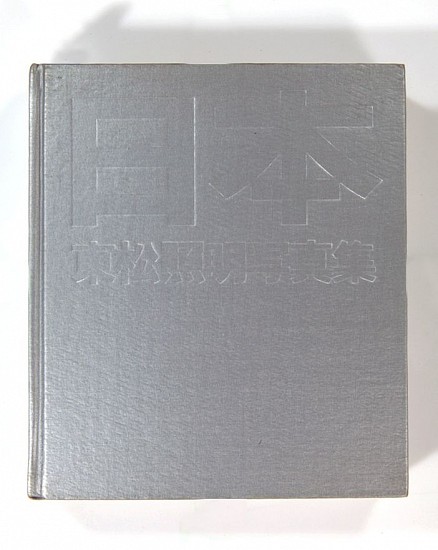
![Taki, Koji; Takanashi, Yutaka; Nakahira, Takuma; Moriyama, Daido, Provoke. Shiso no tame no chohatsuteki shiryo (Provoke. Provocative Documents for Thought) Nos. 1 - 3. [Together with:] Mazu tashikarashisa no sekai o sutero (First Abandon the World of Pseudo-Certainty)] [Provoke 4 & 5]
1968 - 1970](/images/22611_h550w916gt.5.jpg)
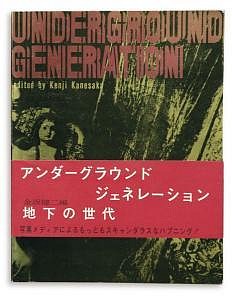
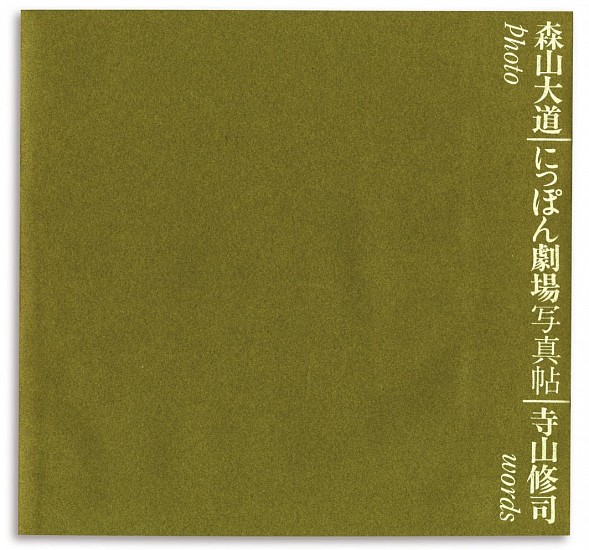
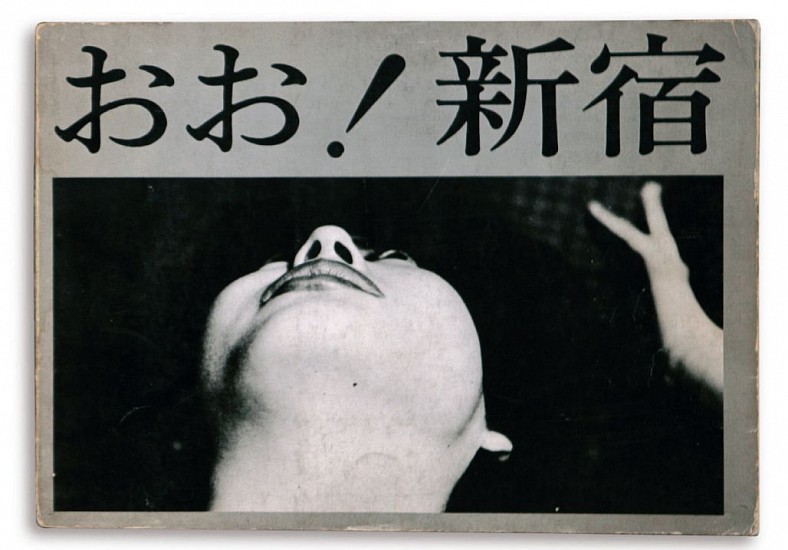
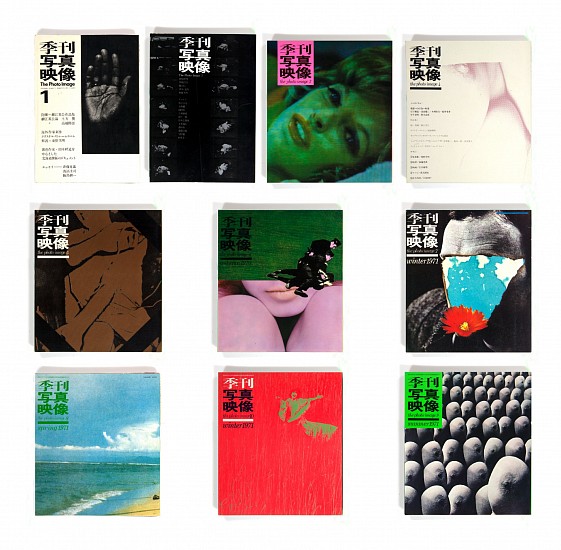
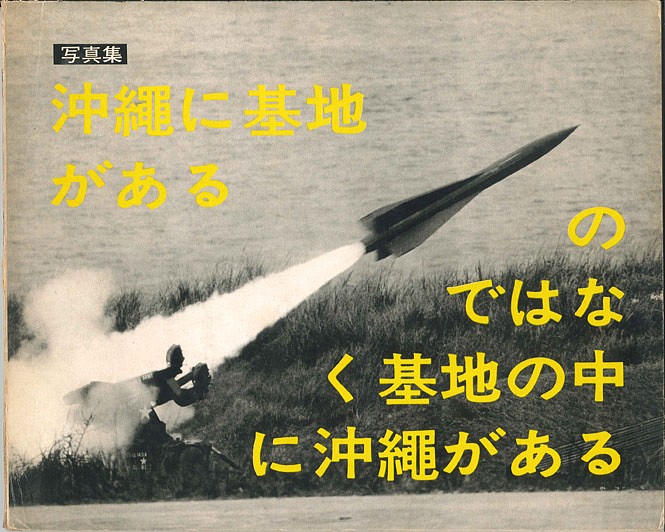
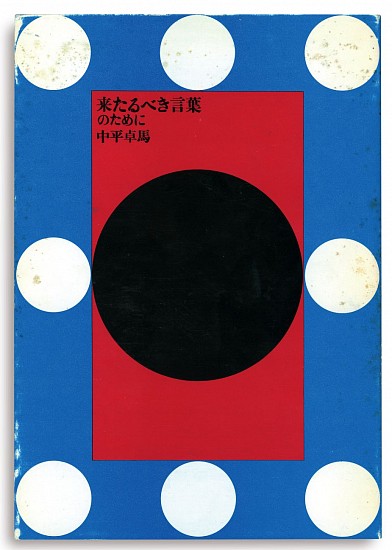
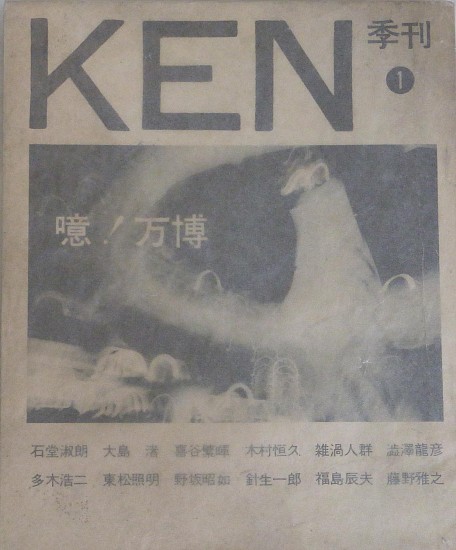
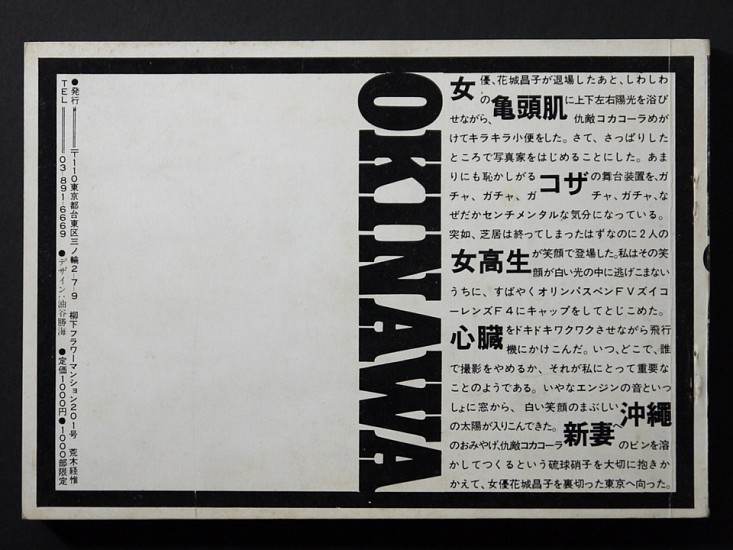
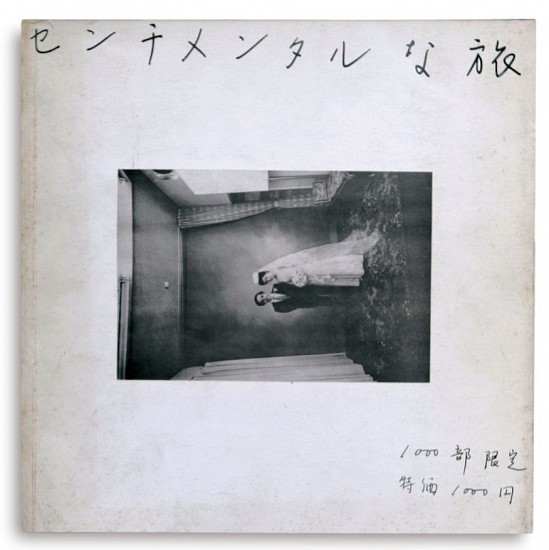
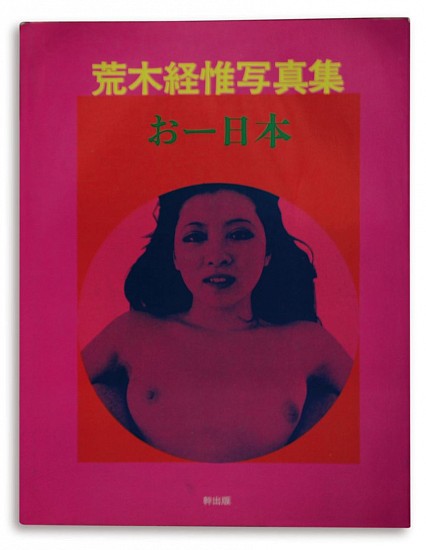
![GERIBARA 5. [Nobuyoshi Araki et al]., Mizugi no Yangu Redii-Tachi (Bathing Beauties); Benjo (Toilet); Five Girls
1971, 1971, 1972](/images/22734_h550w916gt.5.jpg)
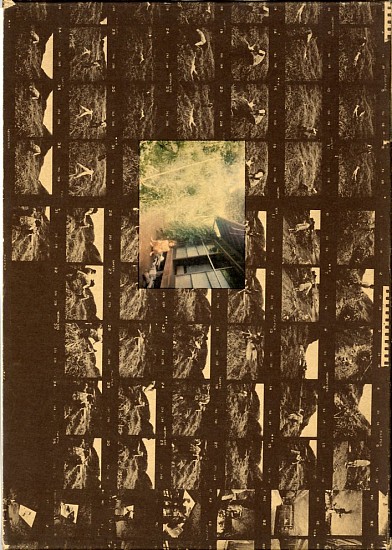
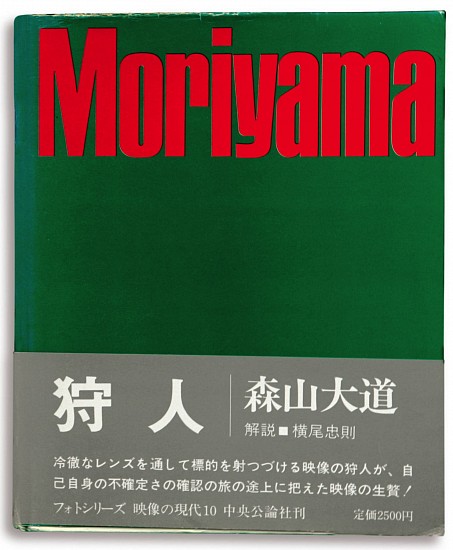
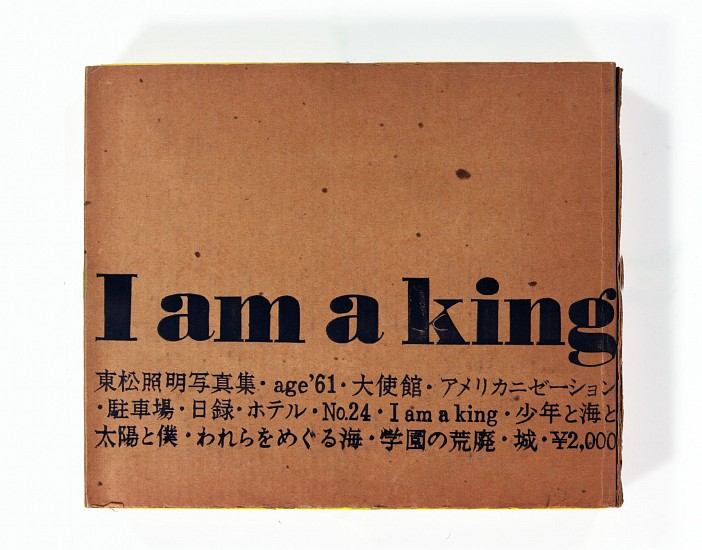
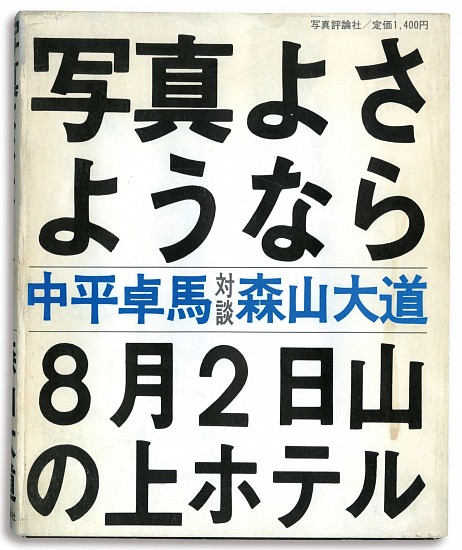
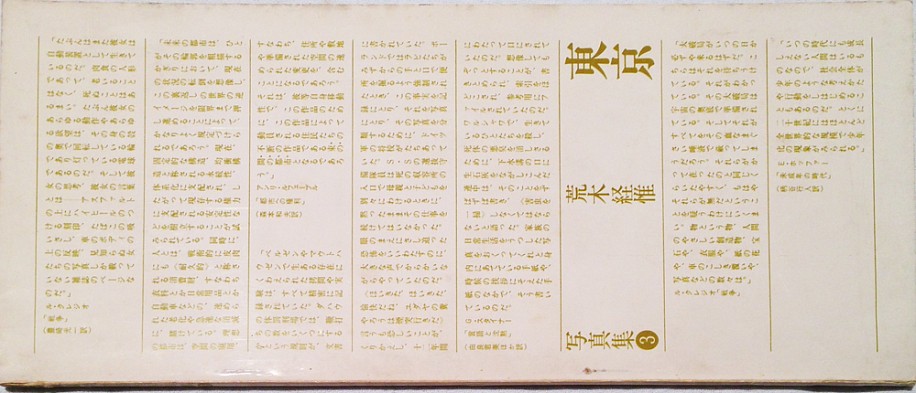
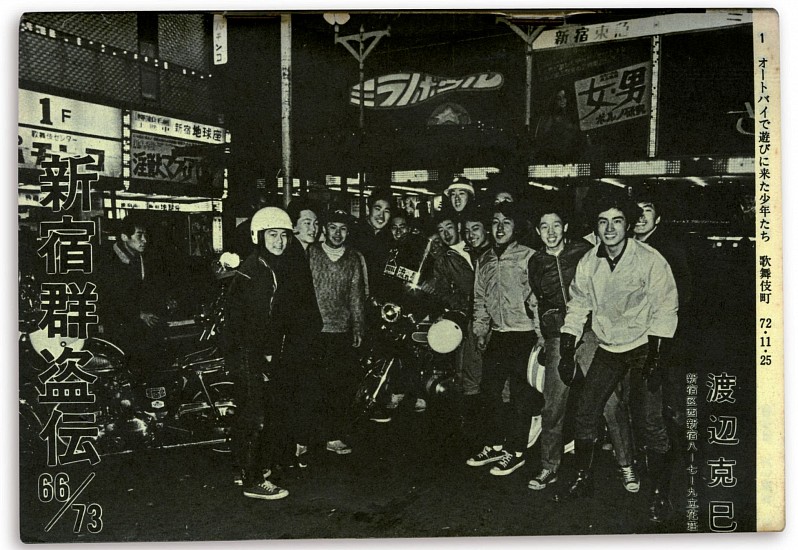
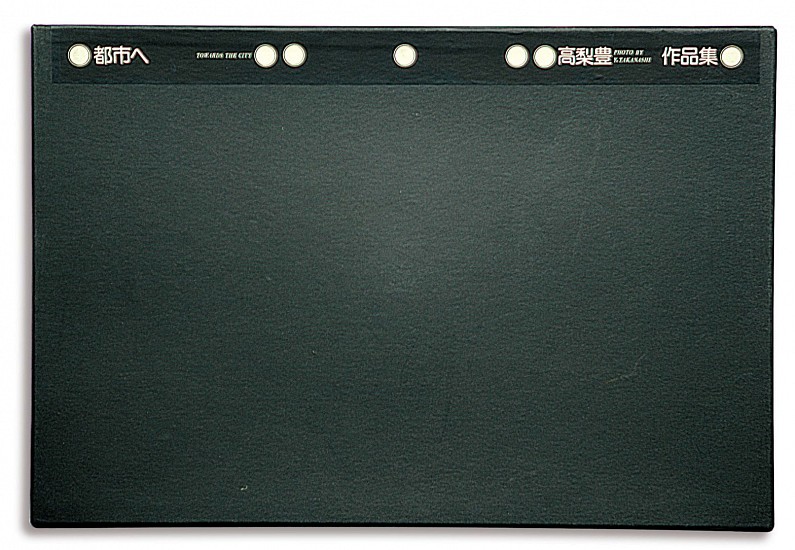
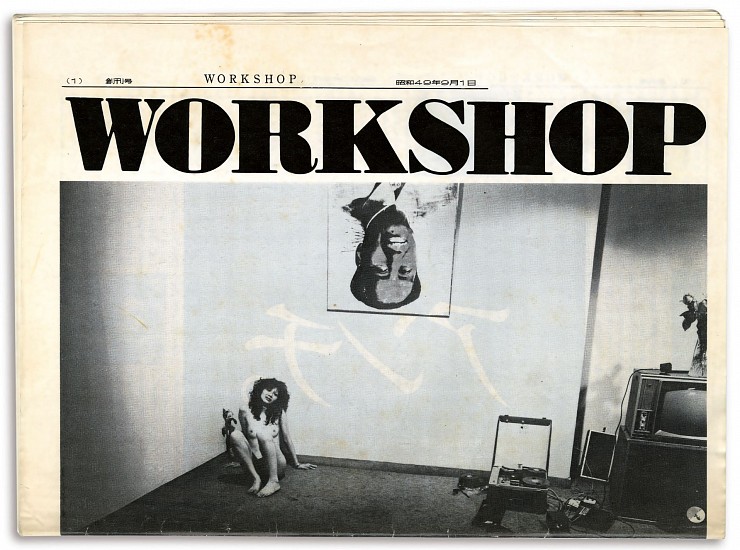
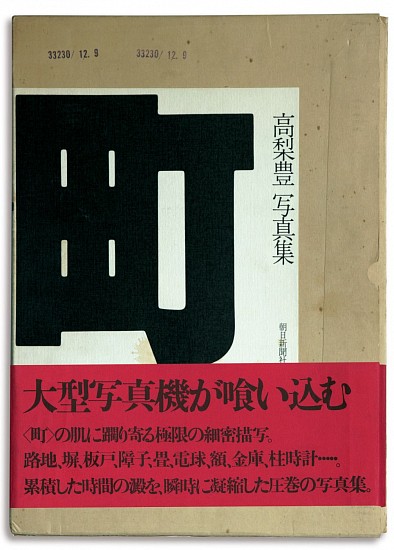
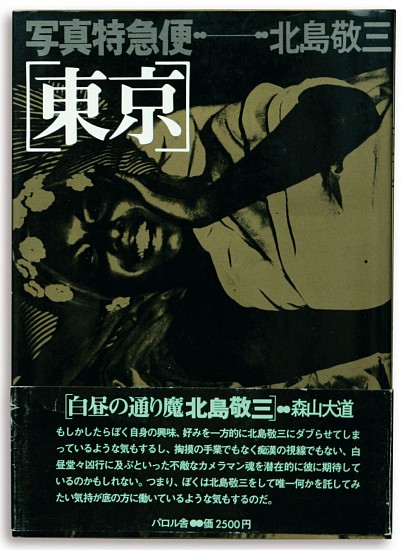
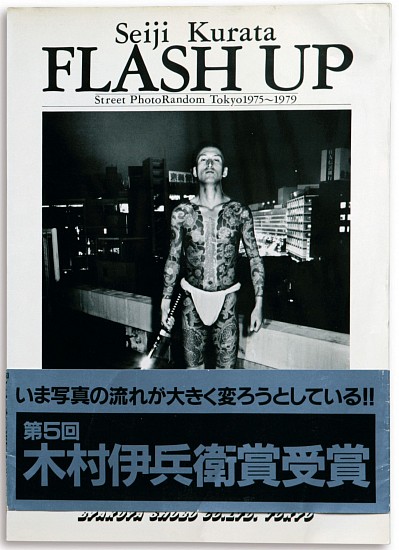
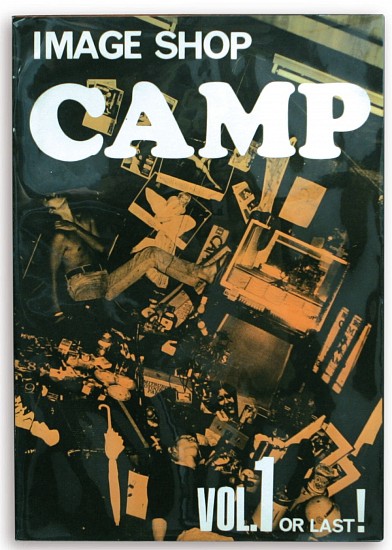
![Keizo Kitajima, Shishin tokkyubin Okinawa (Photo mail from Okinawa). 1-4 [complete set].
1980<br /><br />
1980<br /><br />
1980](/images/22697_h550w916gt.5.jpg)
